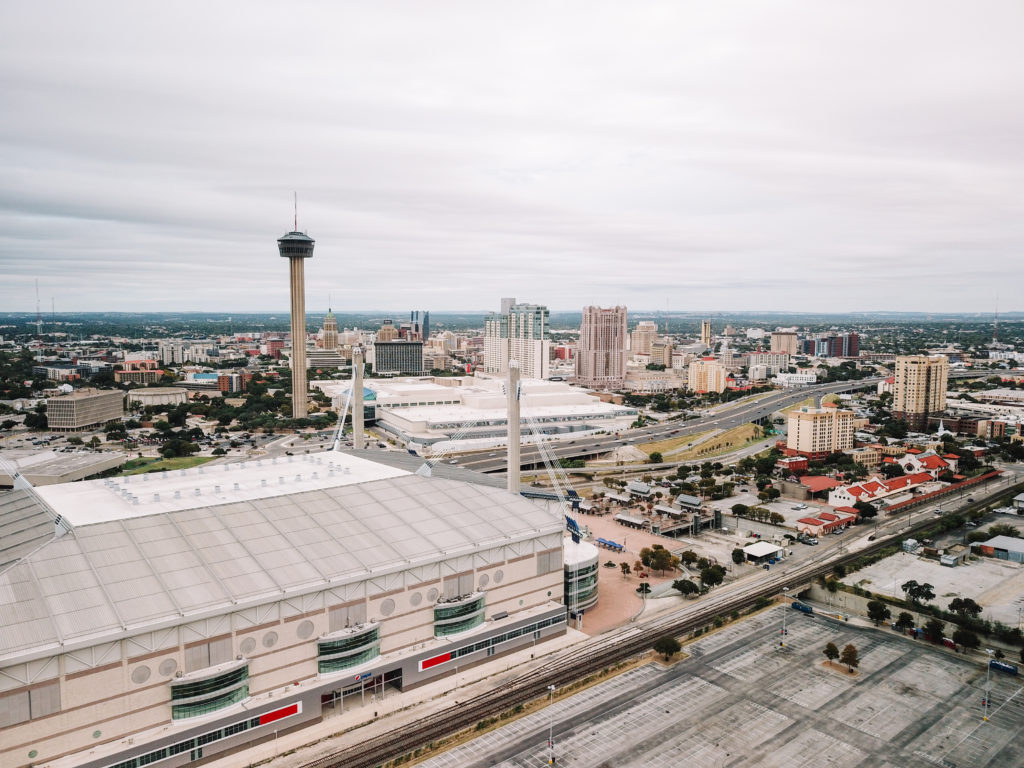In the midst of a global pandemic, where uncertainty seems to be the place we occupy most, being the organization that drives progress toward a shared vision for the future is weird. There. We said it. But as our society urgently considers its systems and structures, San Antonio offers a model for serious disruption.
When multi-sector institutions align toward a common agenda—defined by the community—positive change occurs. That includes a 46% reduction in the teen birth rate, the doubling of municipal voter turnout from around 6% to just over 13%, and a 25% growth in employment in target industries. These are just a few of the successes our community has seen over the last decade. And still, we know there is more work to do. The current COVID-19 situation brings this work to stark reality.
On our latest dashboard, SA2020 trends local COVID-19 data reported by the City of San Antonio’s Metro Health Department. This allows us to see patterns and outliers and use the data to determine courses of action. Not as health experts, but as an organization that uses data to inform alignment and lead to results—San Antonio’s desired results.
The dashboard shows, for example, how transmission is categorized, and that transmission by close contact is on the rise. Meaning, those who are testing positive are coming into contact with someone in their household or place of employment who has also tested positive.

It also illustrates that while testing has expanded, we should be disaggregating the number of people tested versus the number of tests given. If one person, for example, is getting three tests—perhaps because protocol requires them to test negative two times before returning to work—then we’re counting three tests and only one person.

It shows us who in our community is most affected, providing the ratio of deaths to known cases by sex, age, and race. And it also shows us that we need to be reporting intersectionality of these demographics. You can read more about why tracking and reporting on race matters.

We also know that we need to pay attention to our most vulnerable communities to determine where, together, we can shift resources and programs to meet community need. That’s why SA2020 has also mapped specific indicators by City Council District on the dashboard.
The Community Vision states, “San Antonio provides access to quality education for all students no matter where they live in our city.” This is why, for example, we’ve been tracking broadband internet connection for several years. When a global health pandemic forces everyone indoors to go to school virtually, those without Internet access lose access to quality education. So, we mapped digital access by City Council District to show organizations and policymakers where this need is greatest.
Same for healthcare access. San Antonio’s Community Vision is measured in part by an increase in healthcare access—to “be among the healthiest in the nation”—and we’ve definitely seen progress. But compare areas where insurance rates are lower and where medical institutions are located, and you start to see a pattern.
In each of these examples, the COVID-19 crisis hasn’t created need, but it has compounded need across our community. We know the need during COVID-19 would be far less if 1 in 5 of our neighbors weren’t already living in poverty and if 1 in 3 of our neighbors weren’t already burdened by housing costs.
We know that reducing need and eliminating these disparities in need is possible. Together, we reduced teen pregnancy. Together, we increased municipal voter turnout. Together, we increased employment in target industries. The best part about system disruption is that we, as individuals, make up the systems. We made what we have today, so we can unmake it. As we move through this pandemic together, pay attention to the programs and policies that have shifted. SA2020 has started documenting these on We>Me. These are the ones we should pay attention to long term. If we can do it in crisis, we can do it when not in crisis. Our new normal should help us see exactly what we said in our Community Vision: we are all responsible for our collective well-being.

